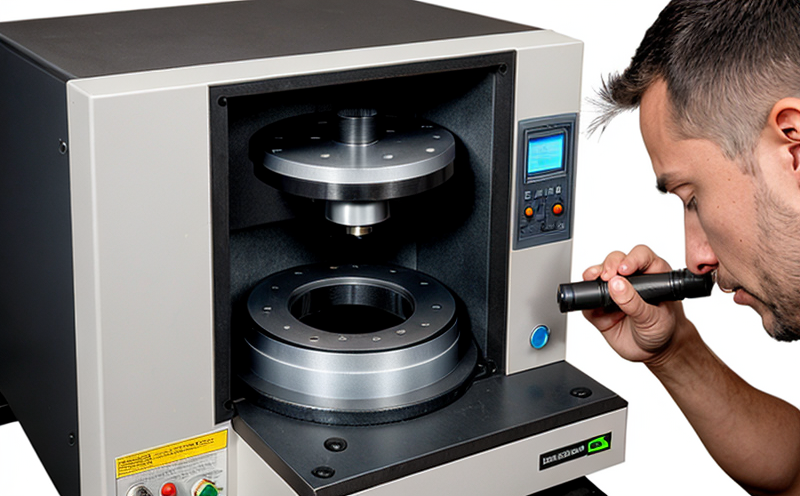ASTM E562 Volume Fraction by Point Count Metallography
The ASTM E562 standard provides a method to determine the volume fraction of constituents in metallic materials using point counting metallographic techniques. This service is particularly valuable for quality managers, compliance officers, R&D engineers, and procurement professionals working with complex metallic alloys used in critical industries such as aerospace, automotive, and medical devices.
Volume fraction by point count involves examining a known area of polished cross-sections under the microscope at high magnification. Points are randomly scattered over this area, and each point is classified into one of several constituents based on its appearance or phase. The volume fraction for each constituent can then be calculated as the number of points falling in that constituent divided by the total number of points multiplied by the area per point.
This method is especially useful when dealing with materials where distinct phases are not easily separated visually, such as multiphase steels or intermetallic compounds. It allows for precise quantification of phase distribution which can be crucial for understanding material behavior and performance under various conditions.
The precision and accuracy of this technique depend heavily on careful sample preparation and consistent point counting practices. Proper polishing techniques ensure that the microstructure is not distorted, allowing accurate classification into different phases or constituents. The use of high-power microscopy (typically 100x-250x magnification) ensures sufficient resolution for distinguishing between phases.
ASTM E562 provides detailed instructions on how to prepare specimens and conduct point counts accurately. Specimens should be polished until they achieve a mirror finish, ensuring that the microstructure is clearly visible without any interference from surface roughness or etching artifacts. The choice of etchant can also affect visibility; therefore, it must be selected carefully based on the type of material being analyzed.
Once prepared specimens are ready, point counting begins by randomly placing points across a defined area. These points serve as reference marks used to determine the volume fraction of various constituents present within that region. Software tools may assist in automating this process but manual methods remain common due to their flexibility and ease of adaptation to specific requirements.
After collecting sufficient data, statistical analysis is performed on the results obtained from point counting. Various statistical measures such as mean, standard deviation, confidence intervals, etc., help assess the variability associated with each measurement. This information is vital for interpreting test outcomes accurately since it indicates how reliable or reproducible the measurements are.
The ASTM E562 method offers several advantages over other volume fraction determination techniques like image analysis software because it doesn't require specialized equipment beyond standard metallographic microscopes and can be adapted to different types of samples easily. However, it does have limitations; for instance, it requires more laborious sample preparation compared to automated systems which could introduce human error if not conducted meticulously.
In summary, ASTM E562 Volume Fraction by Point Count Metallography is a reliable and widely accepted method for quantifying phase distributions in metallic materials. Its application spans numerous sectors including aerospace, automotive manufacturing, defense contracting, and medical device development where precise control over material composition plays a crucial role.
Scope and Methodology
| Step | Action | Description |
|---|---|---|
| 1 | Sample Preparation | Polish samples to achieve a mirror finish, ensuring no etching artifacts. |
| 2 | Determine Point Grid Size | Select appropriate grid size based on the desired resolution and sample type. |
| 3 | Scatter Points Randomly | Place points randomly across the predetermined area using a mechanical device or manually. |
| 4 | Classify Each Point | Categorize each point into one of several constituents based on its appearance under high magnification. |
| 5 | Analyze Data | Calculate volume fractions using the number of points falling within each constituent multiplied by the area per point. |
The scope of this service includes the entire process from sample preparation through final analysis. By adhering strictly to ASTM E562 guidelines, we ensure consistent and reliable results across all tests conducted here.
Industry Applications
| Industry | Application | Description |
|---|---|---|
| Aerospace | Analyze composite materials | Determine the distribution of phases in advanced composites used in aircraft structures. |
| Automotive | Evaluate engine components | Assess wear patterns and phase compositions in critical engine parts like pistons or cylinder liners. |
| Medical Devices | Examine implant materials | Quantify the distribution of phases within metallic implants to ensure optimal performance under physiological conditions. |
| Defense Contracting | Inspect weapon systems components | Ensure that critical components like armor plating or bullet casings have the correct phase composition for enhanced durability and safety. |
The ASTM E562 Volume Fraction by Point Count Metallography is widely applicable across various industries where detailed knowledge of material microstructure is essential. From aerospace to defense contracting, this method plays a vital role in ensuring product quality and safety.





